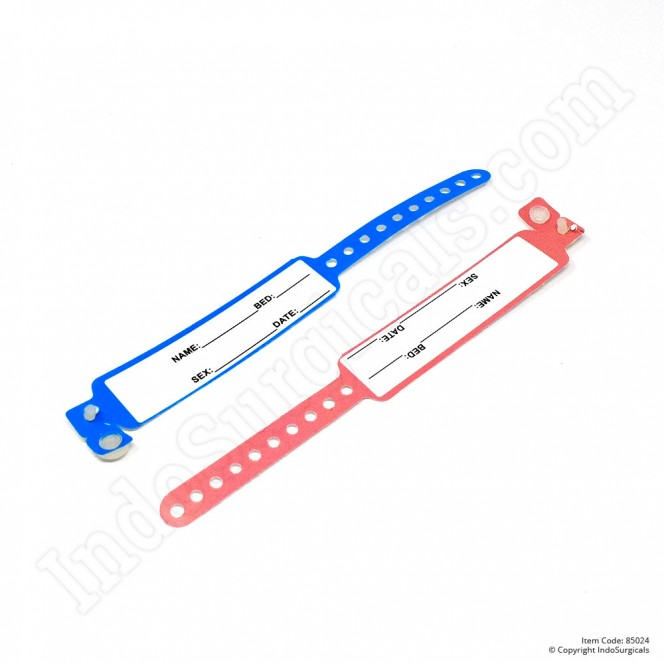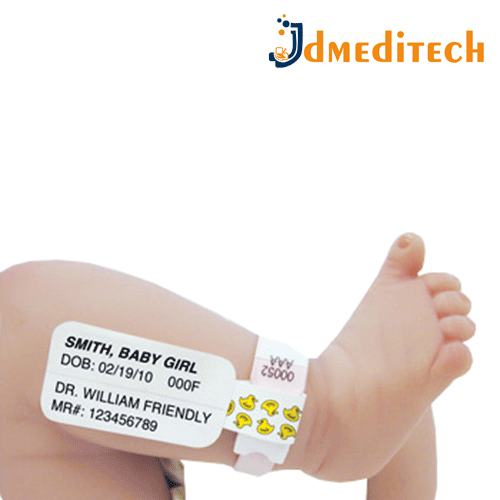Checking Out the Various Types of Patient Identification Band Used in Clinical Facilities
In the intricate globe of medical care, the important role of Patient Identification bands frequently goes undetected. These bands, varying from easy paper wristbands to innovative RFID bands, form the foundation of Patient safety methods, guaranteeing precision in Patient Identification.
Recognizing the Significance of Patient Identification Bands
While they may seem like plain devices, Patient Identification bands play an important role in medical centers. These bands offer as an important device for verifying Patient identification, protecting against clinical errors related to misidentification. Patient Identification bands likewise aid in improving management jobs, guaranteeing accurate record-keeping and billing.
Typical Paper Wristbands: Their Use and Limitations
Standard paper wristbands have been a staple in Patient Identification across numerous clinical facilities. While their use prevails, they harbor particular restrictions that may influence their efficiency in Patient monitoring. This section will concentrate on the scope of their application and the inherent downsides connected with their use.
Paper Wristbands: Usage Range
In the realm of Patient Identification, paper wristbands have long held a crucial duty. These bands are commonly utilized in outpatient setups, where the Patient's stay is temporary. The wristbands have crucial info such as the Patient's name, date of birth, and an unique Identification number. This simple, yet efficient system, allows clinical professionals to swiftly and accurately determine people, making sure the correct treatment is carried out. Paper wristbands are also utilized in emergency situation circumstances, where quick Identification is critical. Their usage includes events like blood contribution drives and mass vaccination programs, additionally stressing their flexibility. Regardless of innovations in innovation, the simple paper wristband stays a cost-efficient and reliable service for Patient Identification in numerous healthcare scenarios.
Limitations of Paper Wristbands
In spite of their prevalent use, paper wristbands are not without their drawbacks. Their physical sturdiness is among the considerable restrictions. Exposure to water, sweat, or misuse can render them unreadable or even cause them to disintegrate. Furthermore, paper wristbands often lack the technological capacities of more modern-day choices, such as barcoding or RFID chips, restricting their functionality to just presenting created info. The failure to update or change the information on the wristband is one more shortcoming. If the info is transcribed, legibility can be endangered, leading to possible misidentification. Lastly, paper wristbands can cause pain or skin irritability to some individuals, specifically when put on for prolonged durations.
Barcoded Wristbands: Developments in Patient Identification
While Patient Identification has actually long been an important aspect of health care, the development of barcoded wristbands indicates a significant leap forward. These bands leverage the simpleness of barcoding innovation, enabling for Patient info to be rapidly scanned and accessed. They enhance the speed and precision of Patient Identification, lowering the threat of clinical mistakes associated to misidentification.
Superhigh Frequency Identification (RFID) Bands: an Action In The Direction Of Futuristic Medical Care
The advancement of Patient Identification bands has caused the emergence of Radio Regularity Identification (RFID) Bands (patient identification band). These ingenious tools present essential advantages for healthcare centers, using a much more efficient and technically progressed ways of Patient Identification. The application of RFID in health care is a considerable step in the direction of a much more advanced method to Patient monitoring and security
Understanding RFID Bands

RFID Bands: Key Benefits
Primarily, these bands boost Patient safety and security by providing exact, instantaneous Identification, thereby decreasing clinical mistakes. RFID bands can keep a vast amount of Patient information, consisting of clinical background and allergies, enabling customized treatment. In general, RFID bands stand for a substantial advancement in Patient Identification technology, benefiting both clients and health care carriers.
Executing RFID in Medical Care
These bands offer a seamless way to track and recognize individuals, ensuring their security and improving effectiveness in treatment procedures. RFID bands minimize medical errors by offering exact Patient Identification, which is essential in protecting against misdiagnosis or wrong medicine administration. Therefore, the implementation of RFID bands is a considerable action towards enhancing Patient security and medical care delivery.

Color-Coded Wristbands: Aiding in Quick and Accurate Diagnosis
In the dynamic environment of a clinical center, color-coded wristbands have emerged as essential tools for swift and accurate Identification of a patient's clinical condition. These wristbands, put on by people, lug specific colors that match to various clinical conditions or conditions. This system is made to provide instant aesthetic hints to medical care carriers, enhancing Patient security and care high quality.
Approaches for Effective Implementation and Administration of Patient ID Bands
Achieving optimal use of Patient Identification bands demands a well-structured technique for their execution and browse around these guys monitoring. Patient education and index learning is likewise essential; people need to recognize the objective of the bands and the requirement for their consistent wear. It's necessary to have a backup strategy in place, such as barcode scanning or biometrics, to make sure that Patient Identification is never ever jeopardized.
Verdict
Patient Identification bands are essential in clinical facilities to make sure safety and security and precision. Effective application and administration of these bands can dramatically reduce medical errors, increase effectiveness, and improve total Patient treatment.
These bands, differing from simple paper wristbands to advanced RFID bands, form the backbone of Patient security procedures, making certain accuracy in Patient Identification.The advancement of Patient Identification bands has actually brought about the emergence of Radio Frequency Identification (RFID) Bands. Overall, RFID bands represent a significant development in Patient Identification technology, benefiting both patients and health care companies.
RFID bands minimize medical errors by offering accurate Patient Identification, which is critical in protecting against misdiagnosis or incorrect medicine administration. Patient education is additionally critical; people have to comprehend the function of the bands and the need for their constant wear.